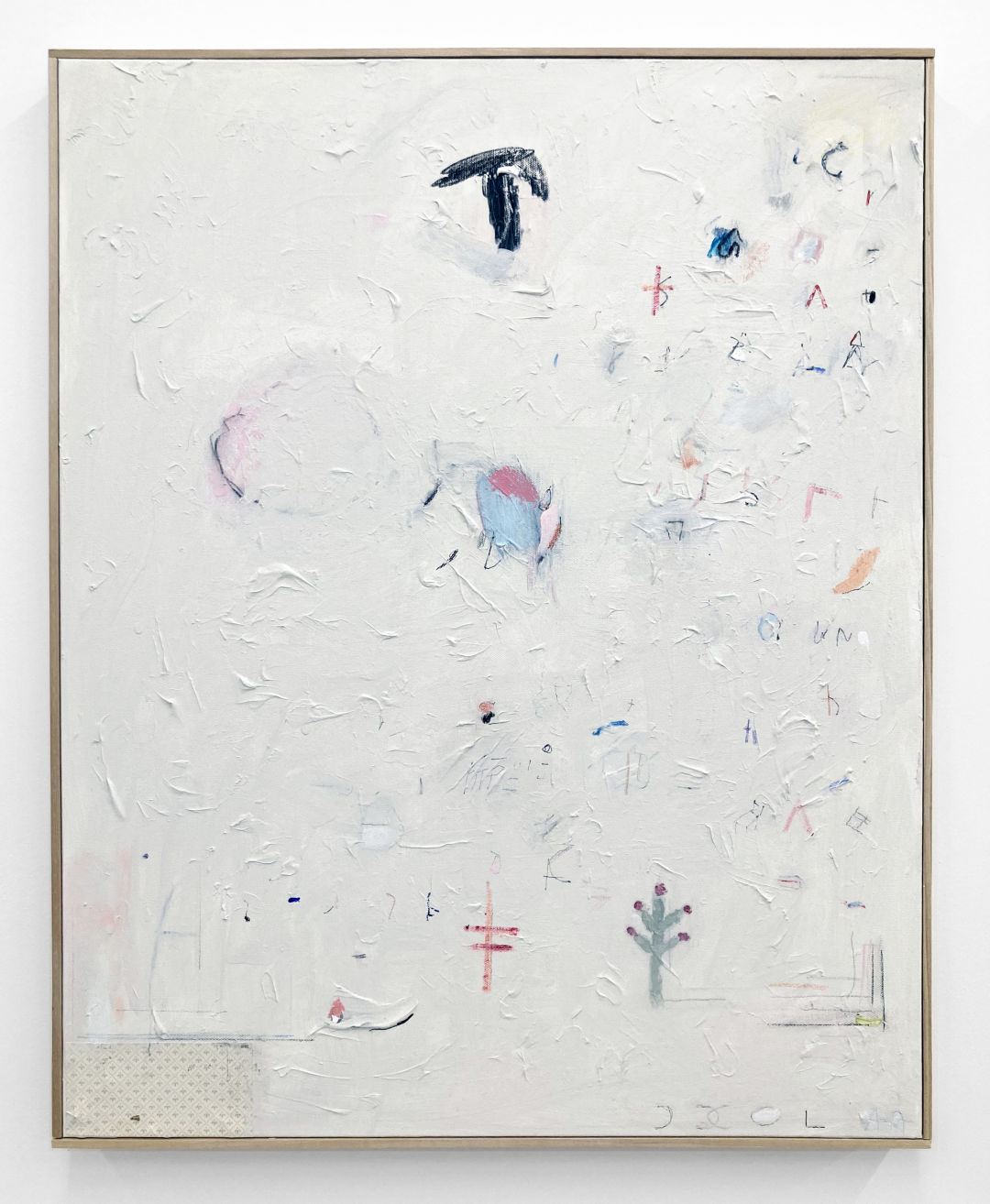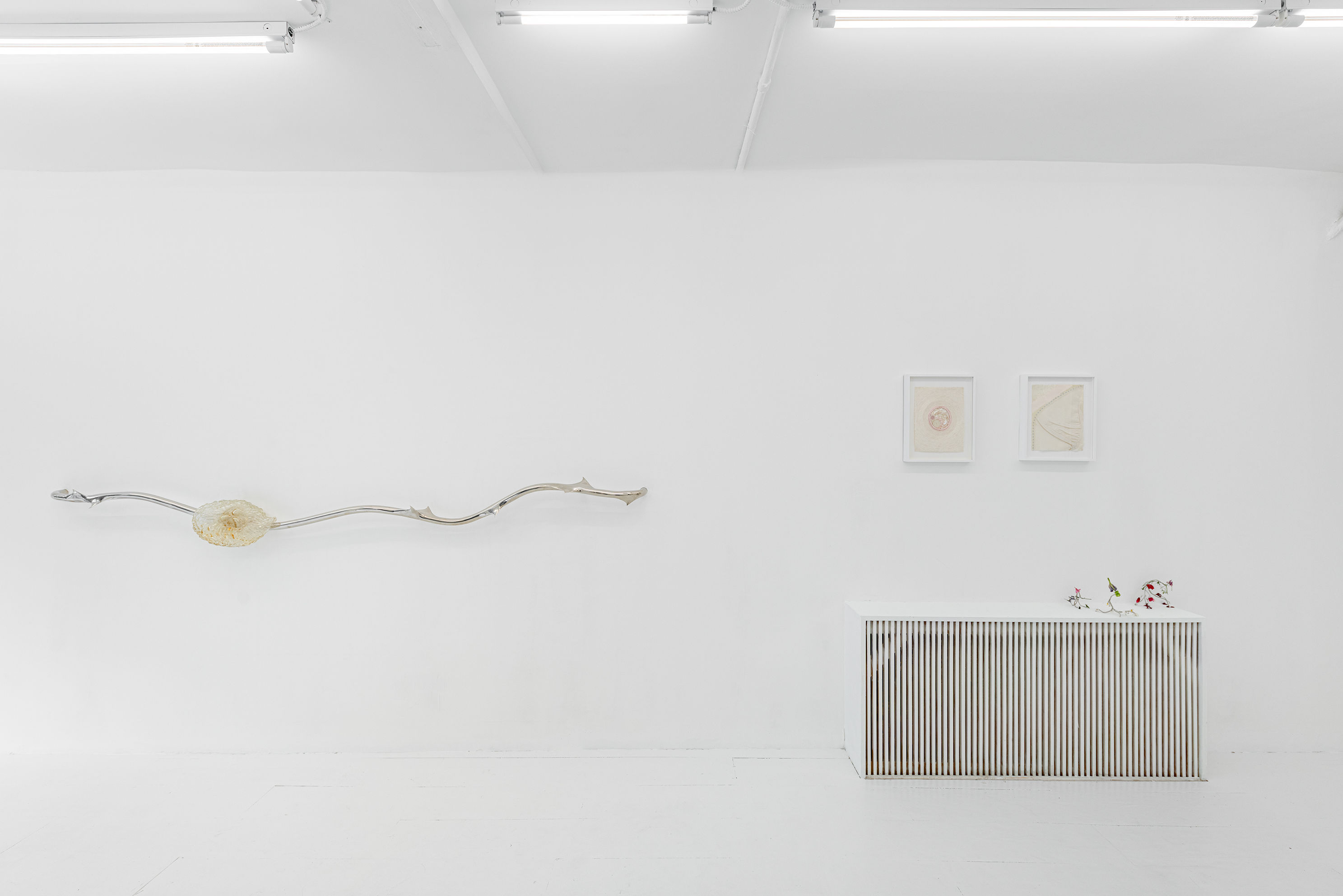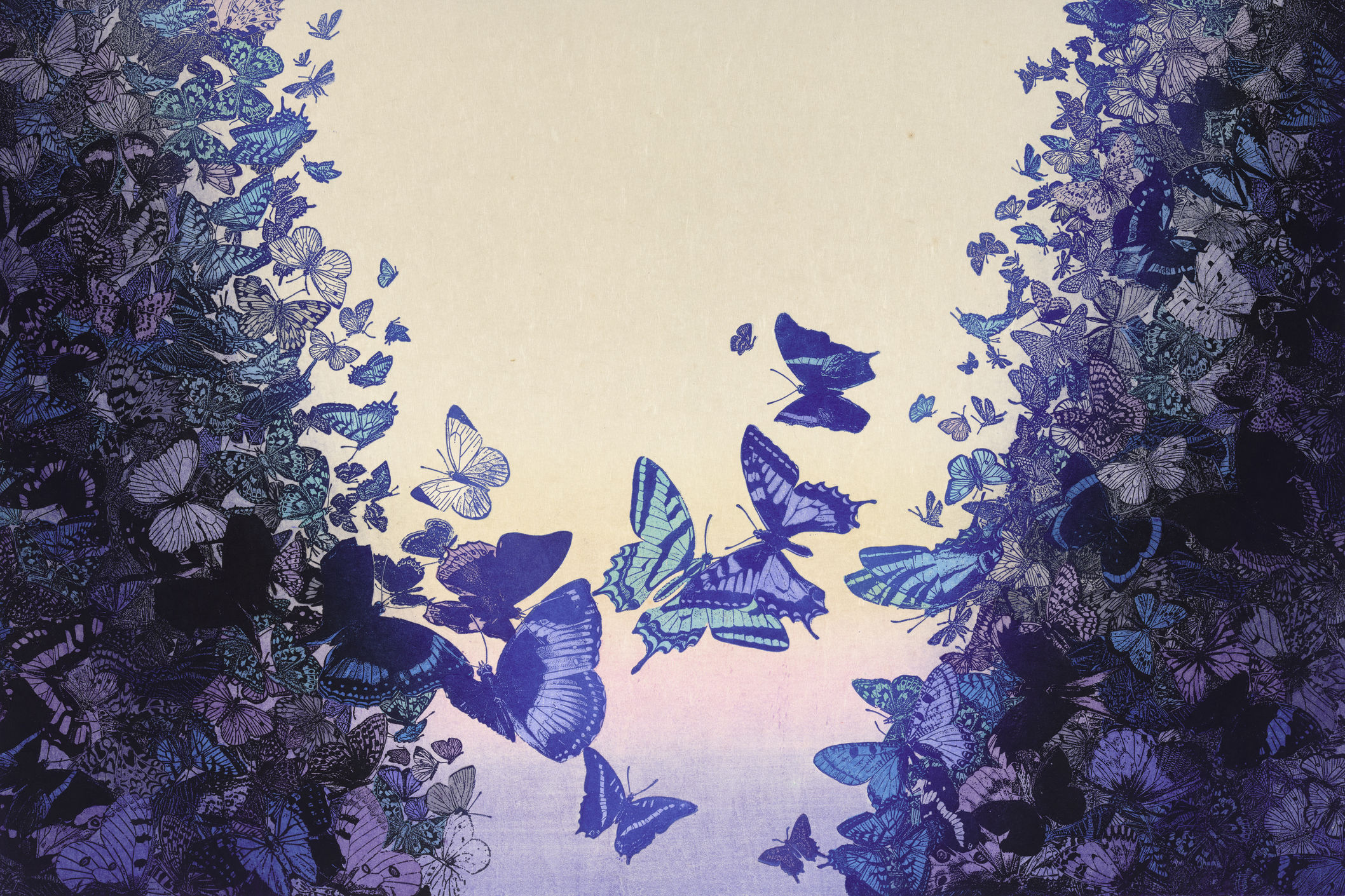On at Nationale: Charlie Salas-Humara Returns to Childhood, and an Almost-Blank Canvas

"There's a whole painting under there," Charlie Salas-Humara says of his abstract works, which are extensively layered before being covered by a wash of white, leaving only discreet windows into the prior work.
Image: Nationale
It’s not uncommon for painters to wash over their canvases; if an idea isn’t coming together, all it takes is a thick layer of white to return to the beginning. After years of freely crafting boisterous abstract paintings, one day Charlie Salas-Humara—in the process of recycling a canvas with a heavy hand of white—came back to a painting half-covered. What he found were little windows into the previous work that brought a sense of wonder. He was digging deep into his painting practice at this point: for years he had split time between his canvases, traveling as a musician, hosting a comedy podcast, and distributing natural wine. Painting, however, was his only outlet that didn’t require use of his hearing.
Roughly a decade ago now, Salas-Humara woke one morning with a full feeling in his right ear. A doctor’s visit brought the vague diagnosis of “sudden hearing loss”—a condition he was told only rarely affects both ears. Two years later, his left ear went out as well. He was suddenly “very deaf,” and unsure if his hearing would ever return. He says, “It was basically a big shrug.”
“You know, people have these life changes,” he says. “And I’ve just never had—I’ve always felt like my life has been such a subtle.… But it was such an extreme change in the way I saw things. I basically had a mental breakdown and cried for a month.”
His hearing did return, but at first it was feeble, and for years he wore hearing aids “turned all the way up.” Even as it returned more fully, the sinking feeling that it could go out again without warning never was never far from his mind.
Fast-forward to late 2020, and a bout of COVID left Salas-Humara once again completely deaf. He isolated, pulling away from social interactions and turned his singular focus to painting. The episode was depressive, and his hearing has since returned, but the introspection set his work on a gratifying path.
Through acquaintances, Salas-Humara had come to know May Barruel, the owner and curator of the gallery Nationale in Southeast Portland. But he had never been asked to show at her gallery.
When Barruel approached him after seeing his current, washed-out paintings over Instagram, he says “I knew it, too—in my brain, like, ‘Oh, these are me, these are my paintings, these are my focus.’ And I think she saw that. And she was like, ‘Let’s do a show,’ or whatever.” The result was a joint exhibition in January of 2021 with the local artist Shiela Laufer. On Saturday, December 3, Salas-Humara will open his first full solo show of “the white paintings” at Nationale, titled Carts Behind the Jewel Osco.
The paintings layer scraps of clothing, found garbage, and recycled knickknacks to build up relief patterns that are enhanced by his subdued pallet of acrylic paints. “I just am a very messy artist, and I started accumulating a lot of garbage in my studio ... bits and scraps and pieces that had color,” is how he puts it. “Just stuff I have laying around, or that I find in garbage bins, like, on the side of the street.”
The works are highly abstracted, but for Salas-Humara, they represent scenes from his punk rock-washed childhood in suburban Illinois (“a quick 20 miles west of Chicago”). The conservative town he grew up in found him with a small, tight-knit crew of similarly counterculture-minded friends. There was plenty to rebel against. “I hated it,” he says.
They mostly hung out behind the local grocery store and loitered at the church, secularly taken aback by the gospel music. The title of the show is in reference to the Illinois-based grocery chain Jewel-Osco. Clandestine is a word he keeps returning to, and the sense of a private but spirited adolescent angst is certainly present.
The scenes have virtually no plot points. They carry titles such as In the Denny’s Parking Lot and Hidden Alleyway. The result is a transient, liminal energy. The statement for the show calls them “containers for distant memories.”
Why, at 48 and decades removed, does he want to catalog these fleeting moments of childhood? He doesn’t quite know. When he first lost his hearing, he says he became extremely nostalgic—obsessed with retracing quotidian childhood memories. “I just don’t remember a lot of meaningful moments, I suppose. It’s just these kind of random moments. And I thought to myself, ‘Why not?’”
He has tried to re-experience the moments depicted in his paintings by physically going back to the scene behind the grocery store, etc.—but it’s not the same. It’s a bit like chasing the thrill of a Snickers bar as an adult. It could never be the same as the memory held in the back of his mind, unconsciously abstracted over decades.
When he did retrace his steps, bringing his own kids to visit the town he grew up hating, he says he found it to be beautiful.
Carts Behind the Jewel Osco opens Saturday December 3, with an artist’s reception 2–4 p.m. The show will run through January 15.
15 SE 22nd Ave, nationale.us




